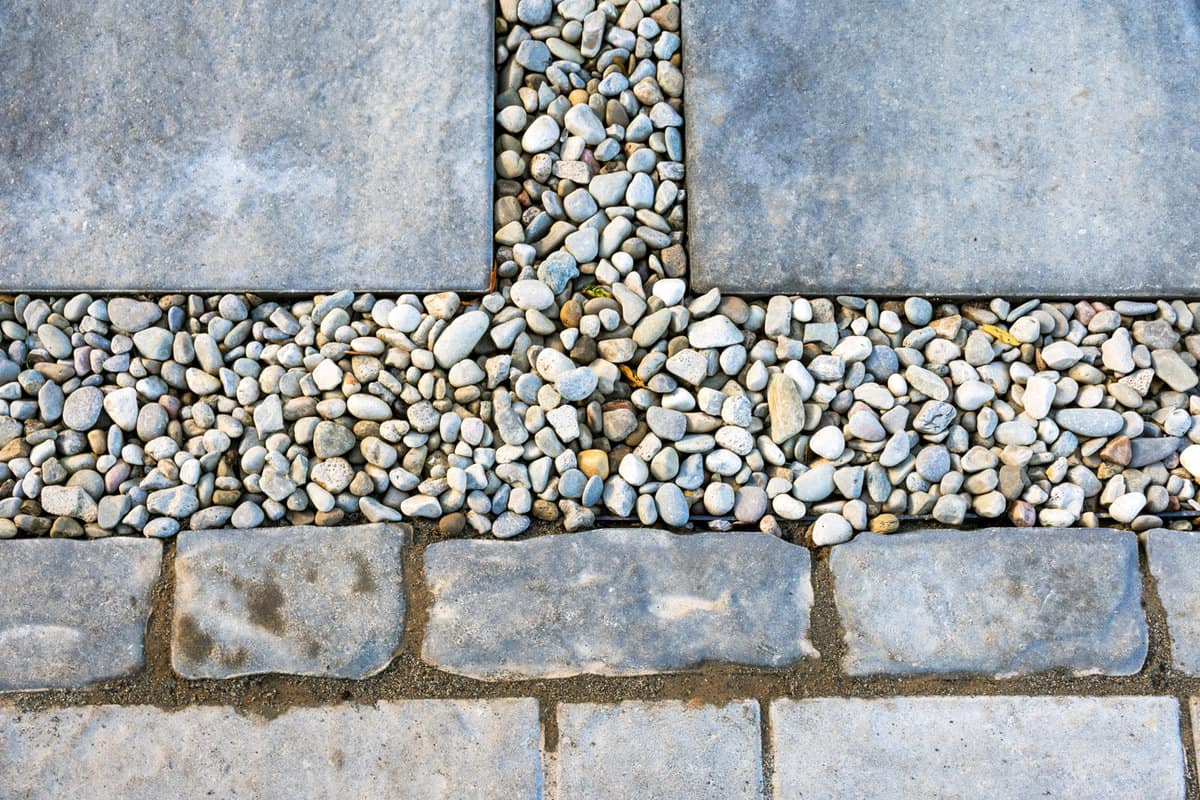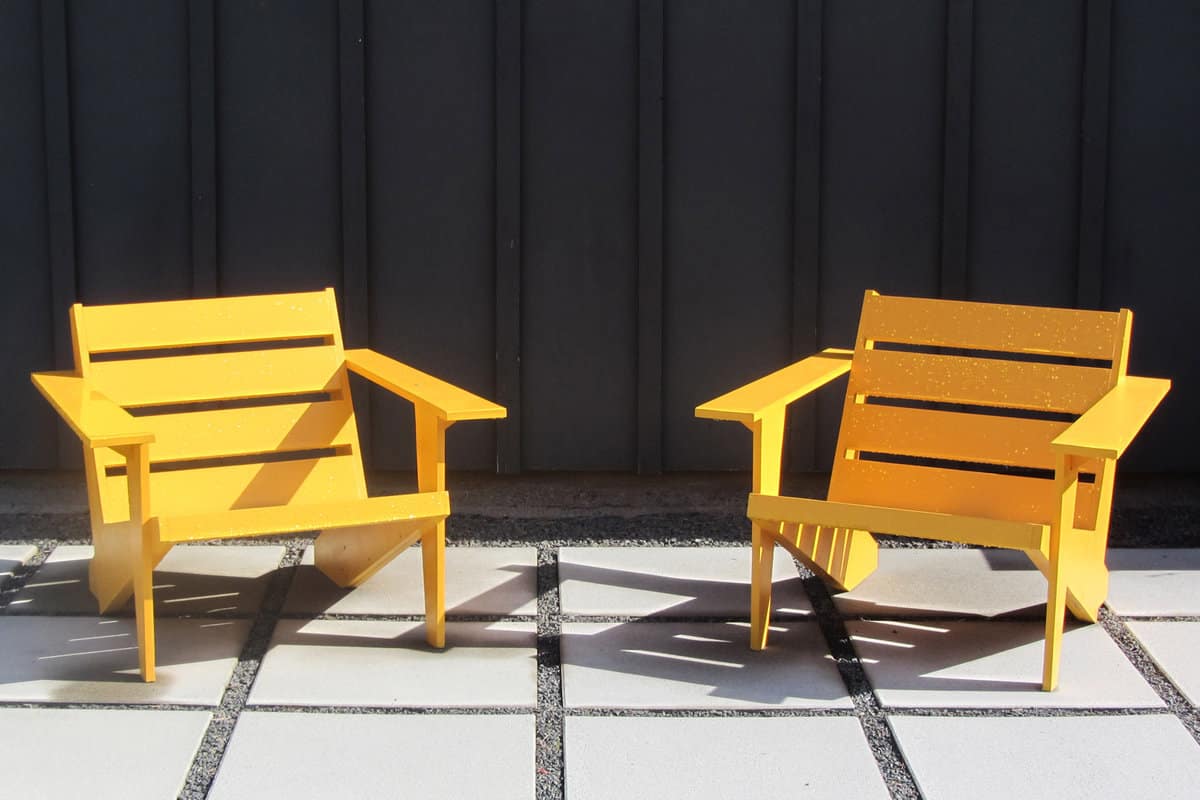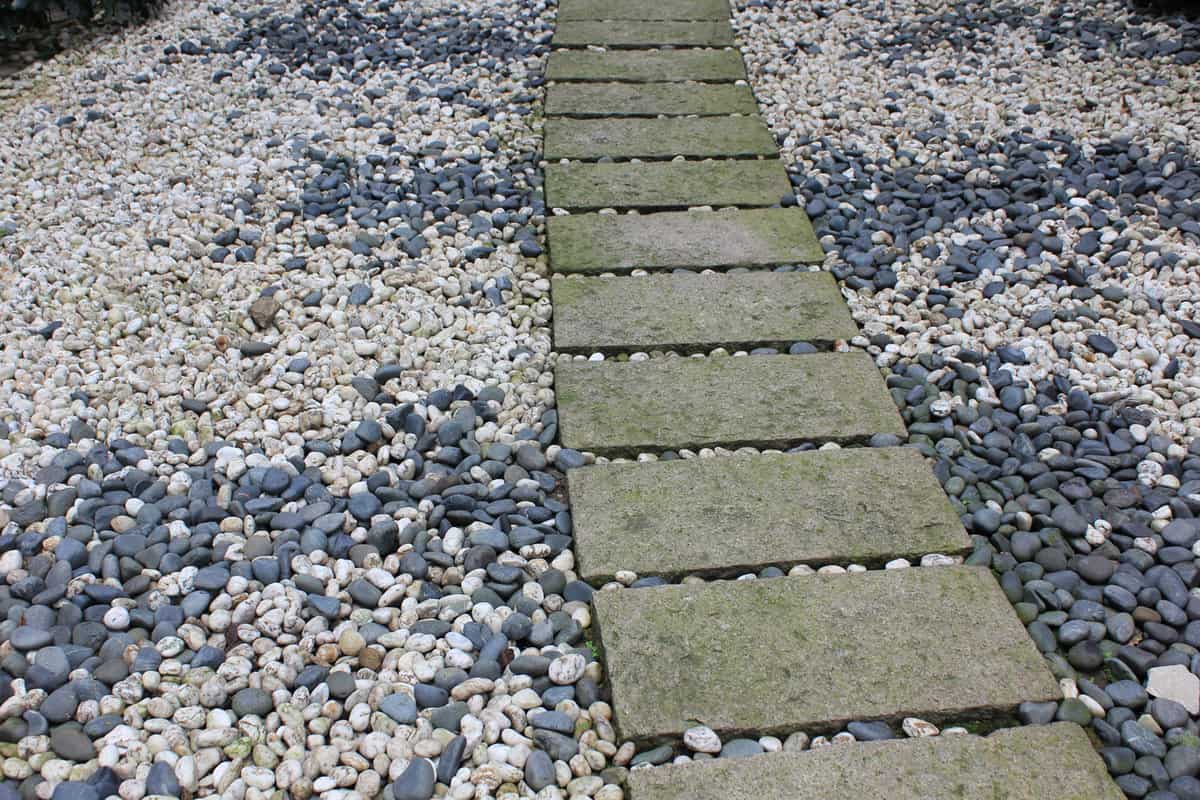Pea gravel is flexible, making it a good option for covering driveways, walkways, pathways, and filling areas between pavers. It is also one of the most cost-effective and low-maintenance materials for high-traffic areas. But how can you keep it in place between pavers? After much research, we've determined how to do so.
There are several foolproof ways you can do to keep pea gravel in place between pavers, and they are the following:
- Use gravel binders
- Tamp and pack the pea gravel in place
- Dig the pea gravel path
- Spread pea gravel over coarse gravel
- Setup a water drainage
- Insert borders
- Use permeable grid
- Use mulch glue
Those mentioned above are the tried and true techniques you can do to keep the pea gravel in place. Please continue reading since we have yet to discuss how these techniques can help pea gravel keep in place. Doing so might also answer some of your additional questions. Let's delve into the details!
![stone road background or pea gravel between pavers - How To Keep Pea Gravel In Place Between Pavers [Expert Tips]](https://gardentabs.com/wp-content/uploads/2022/10/stone-road-background-or-pea-gravel-between-pavers-How-To-Keep-Pea-Gravel-In-Place-Between-Pavers-Expert-Tips.png)
Tips On Keeping Pea Gravel In Place Between Pavers

Although pea gravel is a common outdoor surface covering or kid's playground material, keeping it in place is a bit challenging, especially since it quickly relocates all over the area or atop pavers.
To help you out with this problem, we will discuss several proven techniques to keep the pea gravel in place that you can do yourself.
Use Gravel Binders
Gravel binder is a product that you can use to hold pea gravel in place between pavers. And to properly use gravel binders, please follow these steps:
- Prep the area in between pavers by removing all the existing gravel. After that, excavate it, and you must ensure that the site is flat and level.
- Mark out the area. You can use borders for this step.
- Ensure that the area is around five to six inches deep.
- Fill in the area with pea gravel. Tamp and pack it evenly.
- Bring a bucket, fill it with the gravel binder, and seal it tight.
- Flip the bucket upside down and make a few 1/10 inches of holes in the bottom.
- Spread the product over the pea gravel with the bucket. Be careful not to overspread the binder but to spread it evenly as you go.
- Smooth down the pea gravel by using a trowel. However, it is advisable to apply acetone on the trowel to avoid it from sticking into the resin.
- Leave the area dry overnight.
- Repeat the application and let it dry completely. Note that it is preferable to conduct two light applications than perform one heavy application.
Click here to check out this resin binder for gravel on Amazon.
Tamp And Pack The Pea Gravel In Place
Inadequate compaction of the pea gravel may lead to spreading, revealing the landscape fabric underneath, and could also encourage the growth of weeds along the pea gravel route.
So, if you notice that there is much pea gravel loosening on your pavers, you should first tamp and pack them down. By doing such, you can make the surface smooth and compressed and stop them from spreading or migrating all over the place. If you have a wide paver, it would be best to use a roller or tamper.
Dig The Pea Gravel Path
Before you even put pea gravel in between pavers, it would be best to measure and mark out the area first using a measuring tape and spray paint, respectively. After that, you must dig the area four to six inches deep.
As a result, you can create a substantial gravel bed that limits the rate at which the gravel moves into adjacent areas, such as your garden, pathway, or driveway. In addition, since pea gravel tends to create a slippery surface, especially if there is a water overflow problem, this technique will surely be a huge help.
Spread Pea Gravel Over Coarse Gravel
This approach is a must if you have excavated the area. It is practical to use coarse gravel as the first layer before filling the space between pavers with pea gravel.
Pea gravel tends to roll, especially on sloping areas like driveways, because of its spherical shape. In addition, there is a risk that this will cause the pea gravel between pavers to become impermeable.
Here's what you need to do:
- After digging, fill it with two inches of coarse gravel. It would be best to use coarse gravel between 1/2 to 2 inches in size.
- Once you finish pouring coarse gravel, you need to fill it with two to three inches of pea gravel.
The procedure aids in the avoidance of floods. Plus, it prevents the gravel from shifting too much and keeps it in place.
Setup A Water Drainage System
When water drains poorly from your gravel bed, the pea gravel can wash out of the patio and onto the ground below.
Pea gravel patios benefit from a drainage divide in the middle of the gravel bed, with a modest incline on both sides towards the drainage to increase permeability and stop flooding and washouts. After doing such, expect the water to stream adequately and freely.
Insert Borders
See this steel border on Amazon.
In this approach, you can choose between metal or plastic materials. However, if you are to ask, we'd highly recommend using a metal border since plastic borders don't hold as much gravel.
Note that you must set up the borders at least half an inch higher than the pea gravel and ground level to contain the pea gravel in between pavers.
Use Permeable Grid
See this 2" grid system on Amazon.
If you have wide driveways, walkways, pathways, or any paver that retains pea gravel, they can benefit from incorporating permeable grids.
The longevity and cost-effectiveness of permeable grids are the primary advantages of utilizing them. They are porous to water, so pea gravel can properly drain, but they also prevent movement. Water can seep through the permeable grids and into the paver base since the grids are larger and have more open spaces between them.
In addition, it is unnecessary to use gravel binding agents when you are utilizing a permeable grid. The permeable grids will enclose the pea gravel in place with the help of its weight. Good thing that this technique is easy to perform and install. Note that you can use permeable grids even with or without existing gravel.
However, if there is current pea gravel on your pavers, all you need to do is place the permeable grid and utilize a vehicle to help you shove them down.
Use Mulch Glue

Using mulch glue to keep pea gravel in place between pavers is simple and effective. However, it is not a cost-effective technique, especially if you have wide pavers.
If you wish to use this approach, you can follow the following steps:
- Select a glue brand.
- Prepare the product by mixing one part of it into two parts of water.
- Get a garden sprayer and fill it in with the product. The garden sprayer will make the application easier.
- Before you use the mixture, you must ensure that the pea gravel is compact and properly placed.
- Start spraying on the pea gravel's surface. Don't fret if you notice that the mixture is white when sprayed onto the pea gravel. It will soon turn clear as it dries. This function may help track what you've covered and which part you still need to spray.
- Leave the surface for an hour to dry from the first coating.
- Spray again for a second coating and allow it to dry completely.
A mulch glue is porous, so water can easily pass through it, creating a waterproof barrier. This method also keeps your pea gravel undisturbed for a year. As a bonus, the mulch adhesive is safe for use around children and pets.
Click here to check out this mulch glue on Amazon.
What Are The Common Mistakes When Installing Pea Gravel?

The installation of pea gravel is somewhat easy. However, there are these mistakes that you badly need to avoid, such as:
Pouring Pea Gravel Directly Into The Ground
An amateur DIYer might do this without knowing it is a huge mistake. Note that this situation will just encourage the growth of weeds underneath the pea gravel and expose it to flooding from snow melt and rain.
To avoid this, you must use a landscape fabric or at least utilize more considerable stones as a substrate.
Click here to check out this landscape fabric on Amazon.
Ensure Correct Depth
Don't skimp on depth — four inches is the minimum acceptable. Pea gravel in a shallow area could be slick and readily swept away.
Not Installing Borders
As mentioned, borders can help keep the pea gravel in place between pavers. However, some amateur gardeners and landscapers skip this.
Can You Use Cement To Keep Pea Gravel In Place

Sure thing! You can utilize cement at the base to hold pea gravel in place. However, there is one huge drawback to using such. The area will become impermeable. And this means that it will displace water into the pavement's borders, which can cause erosion or floods.
In Summary

If you are a pea gravel fan and want to use it in between pavers, it is just right to determine how you can keep it in place. So, if you want to do it correctly, it would be best to follow all the guidelines we have provided you in this post. Know that keeping the pea gravel in place means keeping the entire paver area clean and attractively pleasing.
Made it to the end? We hope you find this post helpful. If you wish to continue reading, you can check these posts out!
How To Level Ground For Gravel
How To Fill Gaps Under Gravel Board?
![How To Keep Pea Gravel In Place Between Pavers [Expert Tips] - 1600X900](https://gardentabs.com/wp-content/uploads/2022/11/How-To-Keep-Pea-Gravel-In-Place-Between-Pavers-Expert-Tips.jpg)





